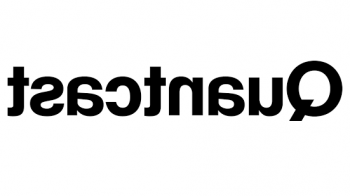Engaging the multidimensional consumer in the new normal
Posted on Wednesday 03 March 2021 | Chris Hogg - EMEA Managing Director, Lotame
Chris Hogg Managing Director at Lotame guides us through engaging the new multidimensional consumer
Digital advertising is no stranger to change. This year, alone, our industry has faced an onslaught of hurdles, including data privacy regulations and third-party cookie deprecation, to name a few. If consumer engagement is our collective North Star, where do we go from here? Our industry has faced steep challenges before and come out the other side better. This time is no different. If we come together to find technologies and techniques that work for all of us in this cookie-challenged, privacy-first environment, we all stand to gain — consumers included. So how do we understand and engage consumers in relevant and responsible ways amidst our “new normal”? Data enrichment is one approach that answers both these needs.
First things first about data
First-party data is becoming more important in this new landscape. And, rightly so. We’ve long advocated for our clients to collect their valuable first-party data and have built the tools they need to do just that. But, first-party data does have its limits, which all would readily admit. It is often limited in scope – perhaps consisting of no more than an email address or a webpage visit – and provides a very narrow view of behaviours as those exist within the confines of that publisher’s property. That’s not a criticism of publishers – it’s a fact.
Consumers are naturally multidimensional with many passions and interests, so advertisers must be able to see them from many angles to effectively target them and build lasting relationships. Even detailed first-party data with additional attributes can quickly become outdated as audiences continually evolve. Consider how much the pandemic has changed consumer needs and behaviours in the last six months. First-party and third-party data from the start of the year would hardly paint an accurate picture of consumers today, no matter how detailed.
Here’s an example from my own life. I’m an avid podcast listener. I used to consume many podcasts on my commute to/from London. That Peter Crouch Podcast would recognise me as a super fan and know from the subject of the podcast that I really enjoy football. If they’re a particularly sophisticated publisher, they might also be able to pick up on the time of day and day of week that I listen. Now, I still listen to those very same podcasts. But the when and where are very different. Instead of my commute to/from London, I listen to podcasts on my daily run, a new habit I’ve taken to over the last few months.
Would this publisher be able to pick up on that shift in my behavior? There’s nothing in my interaction with them to allude to my new running habit. They could certainly make assumptions about the time of day I listen as a work-adjusted habit but they’d be wrong — and more importantly they’d miss out on the opportunity to connect me with an advertiser geared towards motivating new runners.
My point is, for advertisers, data enrichment provides the answer to gaining a panoramic view of consumers and capturing their complex digital lives in close to real time. By augmenting raw first-party data with robust sources of high quality, current, second and third-party data, they can expand their view of consumers and create relevant addressable audiences to execute on — and more relevant experiences for consumers.
How data enrichment changes the game
Data enrichment has multiple benefits for advertisers. First, there is the prospect of sharper audience segmentation. Using multiple data sources, marketers can segment in new ways and categorise customers that have more things in common to increase the effectiveness of targeted campaigns. The more data they have access to, the more defined and accurate audience segmentation can be.
Second, data enrichment allows advertisers to develop a more complete view of the customer and build addressable personas including information such as interests, content preferences, attributes and location. Ultimately these personas will enable them to foster stronger customer relationships and to personalise the audience experience, perhaps by suggesting products or services based on a customer’s changing interests, like mine in running.
Third, data enrichment allows advertisers to discover prospects and uncover new leads by using data about existing customers to find and engage lookalike audiences that share similar characteristics, interests and behaviours. It allows advertisers to qualify leads automatically, removing the guesswork and ensuring valuable prospects aren’t unwittingly dismissed due to a lack of information. I might never make the “runner” segment based on my podcast publisher’s insight about me.
Getting the data engine started
The road to richer data necessarily begins with internal data collection. The more robust an advertiser’s first-party data, the more scale they can add by enriching it with second or third-party data. A centralised customer relationship management (CRM) system is an effective way to share up to date customer information across an organisation, and first-party data can also be collected using web analytics tools.
Next, advertisers can migrate their first-party data into high-quality data enrichment tools. To make sure no crucial insights and opportunities are missed, enrichment suites must have the capacity to onboard and amalgamate data from multiple sources including online and offline channels, devices and platforms.
Lotame Panorama is a suite of data enrichment solutions for digital advertising that contributes to a collaborative data ecosystem which benefits everyone from advertisers and agencies to digital publishers. It allows advertisers to augment their first-party data with a wide range of attributes and behaviours such as demographics, interests, purchases, TV viewing habits and location. Best of all, Lotame Panorama does not require third-party cookies so enrichment is future proofed for whatever and whenever Google Chrome pulls the third-party cookie ripcord.
With Lotame Panorama, advertisers can see customers in all their dimensions in a connected ecosystem and build more relevant and accurate personas. They can then turn those personas into addressable audiences and activate across the cookie-challenged web, mobile apps and over-the-top (OTT) environments. Advertisers can make use of thousands of ready-made audiences or model their own addressable audiences using the full universe of attributes and behaviours, and they can take advantage of bespoke analysis and dashboards for their industry vertical or business.
In our “new normal”, data enrichment allows advertisers to engage consumers in all their dimensions – no cookies required. By enabling sharper audience segmentation, allowing them to build addressable personas that can be activated across all environments, and helping to identify and qualify new leads, data enrichment allows advertisers to see consumers from every angle and understand their complex digital lives. The result is relevant, responsible targeting and the nurturing of strong, long-lasting customer relationships
Related content
Contextual Targeting: The answer to ensuring brand safe ad environments?
Learn moreA closer look at third-party cookie matching
Learn moreMember Viewpoint: Quantcast discuss GDPR
Learn moreThe Power of First-Price Auctions
Learn more
Rediscover the joy of digital advertising
Champion connections instead of clicks. Capture audiences' imaginations, not just their attention. Boldly move to your own beat instead of letting tech set the pace. It’s time to rediscover the joy of digital.



